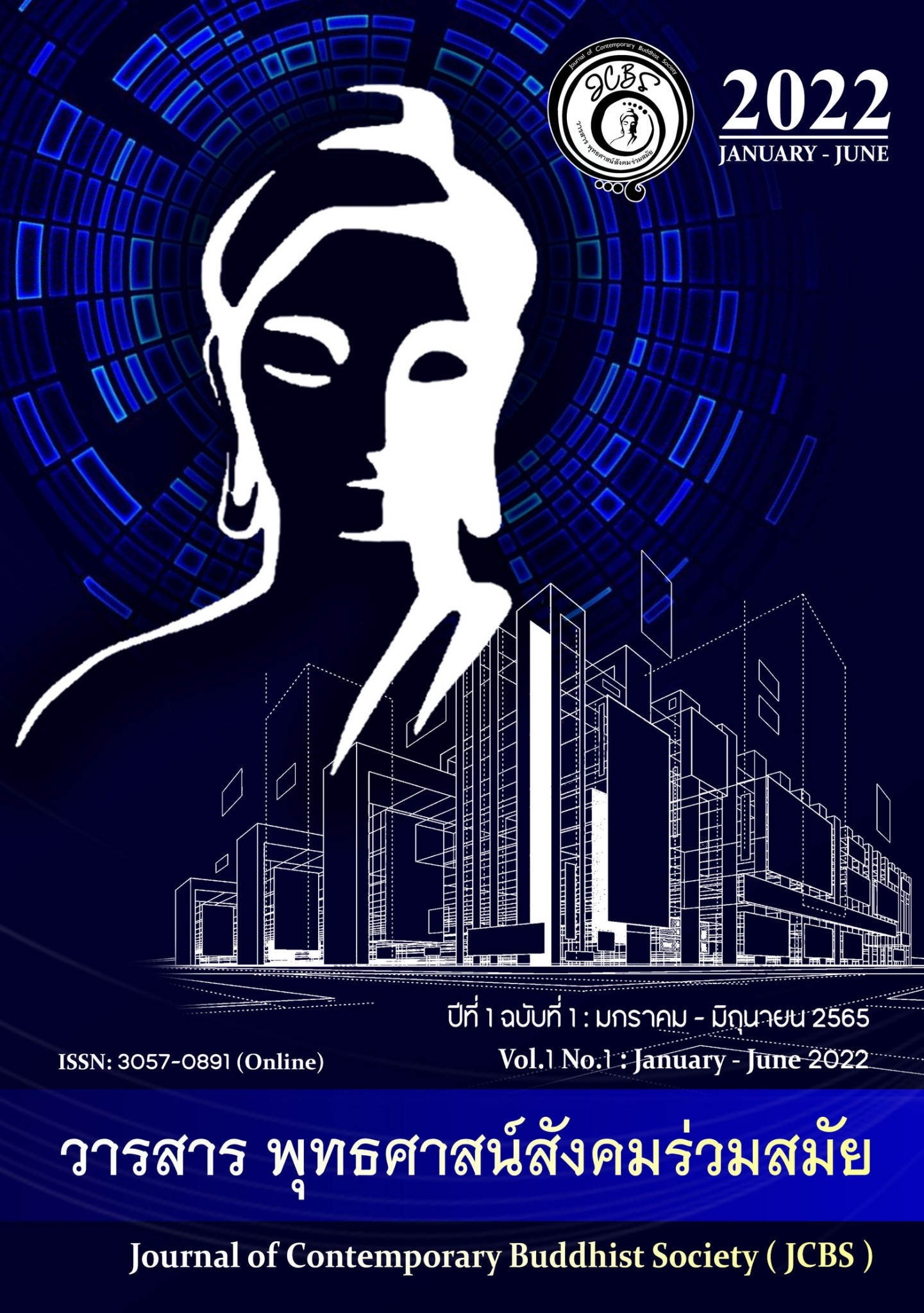AN ANALYSIS OF PUBLIC WELFARE IN BUDDHIST SCRIPTURES
Keywords:
Support/Assistance, Public Welfare, BuddhismAbstract
The Research Paper "Analysis of Public Welfare in Buddhist Scriptures" The objectives are as follows: 1) to study public welfare in Thai society; 2) to analyze public welfare in Buddhist scriptures. The document-based research methodology is a study and analysis of information from Tripitaka, commentaries, research papers, and academic documents related to the principles and concepts of welfare.
The results of this study revealed that:
There are two types of welfare: 1) social welfare. which has a very broad meaning Refers to all actions to help fellow human beings. or a group of people who come together as a society, as a nation, and who cannot help themselves to be happy both physically and mentally to have the necessities of living, namely food, clothing, housing and treatment of illnesses. 2) public welfare It is an action to help the society in various ways that are not contrary to the monastic discipline, such as the summer ordination and ordination project for monks and novices. Project to help monks and novices at temples experiencing shortage of temples and abbots Monks are leaders in community and social development, such as using the venue as a meeting place for training youth and people in various occupations, building roads to the village, saving money. helping the poor.
Help in the Scriptures It's a kind of relief. is relief from suffering can be analyzed from the Buddha and his disciples. The construction of temples of kings and millionaires such as King Bimbisarn Anathapindika, a millionaire, etc.
As for public welfare at present There are 4 important scopes of assistance, namely 1) assistance, 2) support, 3) participation in development, and 4) network integration. which is called The role of the monks in the present is also possible. Some images may be able to do all 4 items, some may be able to do only one, two, or three items, depending on the strength of each image.
References
กรมการศาสนา. (2540). คู่มือการบริหารจัดการวัดฉบับย่อ. กรุงเทพมหานคร: โรงพิมพ์กรมการศาสนา.
พระครูใบฎีกาสุรพล อาสโภ (แย้มชุ่ม). (2557). “การพัฒนารูปแบบงานสาธารณสงเคราะห์ตามกระบวน
ทัศน์วิถีพุทธ”. ดุษฎีนิพนธ์พุทธศาสตรดุษฎีบัณฑิต. บัณฑิตวิทยาลัย: มหาวิทยาลัยมหาจุฬาลง
กรณราชวิทยาลัย.
พระครูไพโรจนภัทรคุณ (วิโรจน์ ภทฺทปญฺโญ). (2557). “รูปแบบการพัฒนาภาวะผู้นาของเจ้าอาวาสในเขต
การปกครองคณะสงฆ์ภาค 14”. ดุษฎีนิพนธ์พุทธศาสตรดุษฎีบัณฑิต. บัณฑิตวิทยาลัย: มหาวิทยาลัยมหาจุฬาลงกรณราชวิทยาลัย.
พระธีรพันธุ์ ฐิตธมฺโม (บุญบาง). (2564). “การศึกษางานสาธารณสงเคราะห์ของคณะสงฆ์จังหวัด
นครสวรรค์ที่มีต่อการพัฒนาสังคม”. วารสารวิจยวิชาการ. ปีที่ 5 ฉบับที่ 2 (มีนาคม-เมษายน): 25-34.
พระธรรมกิตติวงศ์ (ทองดี สุรเตโช). (2556). “ธรรมทีปนี”. ทางเดิน. ปีที่ 28 ฉบับที่ 118 (พฤษภาคม - มิถุนายน): 20.
พระเทพปริยัติสุธี (วรวิทย์ คงฺคปญฺโญ). (2540). การคณะสงฆ์และพระศาสนา. กรุงเทพมหานคร: โรงพิมพ์มหาจุฬาลงกรณราชวิทยาลัย.
พระสมุห์วศิน วิสุทฺโธ (พงษ์ศักดิ์). (2562). “การจัดการงานสาธารณสงเคราะห์ของพระสังฆาธิการอำเภอเมือง จังหวัดราชบุรี”. วิทยานิพนธ์พุทธศาสตรมหาบัณฑิต สาขาการจัดการเชิงพุทธ. บัณฑิตวิทยาลัย: มหาวิทยาลัยมหาจุฬาลงกรณราชวิทยาลัย.
พระสมุห์ดิเรก อติเรกสุโภ (งามกาละ). (2561). “การบริหารจัดการงานสาธารณสงเคราะห์ของพระสังฆาธิการ ในอำเภอโพธาราม จังหวัดราชบุรี”. วิทยานิพนธ์พุทธศาสตรมหาบัณฑิต สาขาการจัดการเชิงพุทธ. บัณฑิตวิทยาลัย: มหาวิทยาลัยมหาจุฬาลงกรณราชวิทยาลัย.
สำนักพระพุทธศาสนาแห่งชาติ. (2546). วัดพัฒนา 46. กรุงเทพมหานคร: โรงพิมพ์สำนักงานพระพุทธศาสนา.
สุทธิพงศ์ ตันตยาพิศาลสุทธิ์. (2541). พระราชบัญญัติคณะสงฆ์ กฎกระทรวง กฎมหาเถรสมาคม พร้อมด้วยระเบียบและคำสั่งมหาเถรสมาคมเกี่ยวกับการคณะสงฆ์และการศาสนา. กรุงเทพมหานคร: โรงพิมพ์กรมการศาสนา.
วุฒินันท์ กันทะเตียน. (2562). แก่นสาธารณสงเคราะห์ในคัมภีร์พุทธ. นนทบุรี: นิติธรรมการพิมพ์.
Downloads
Published
How to Cite
Issue
Section
License
Copyright (c) 2024 Journal of Contemporary Buddhist Society = JCBS

This work is licensed under a Creative Commons Attribution-NonCommercial-NoDerivatives 4.0 International License.



